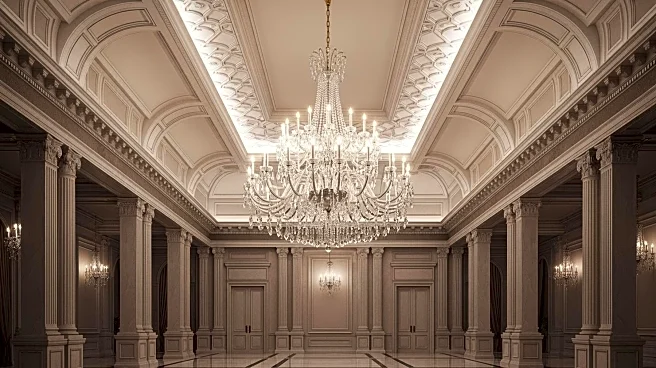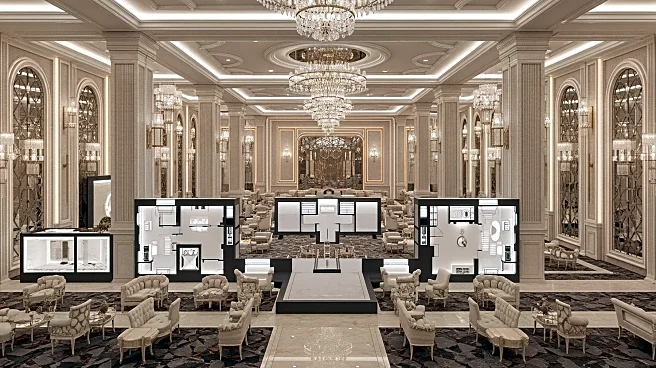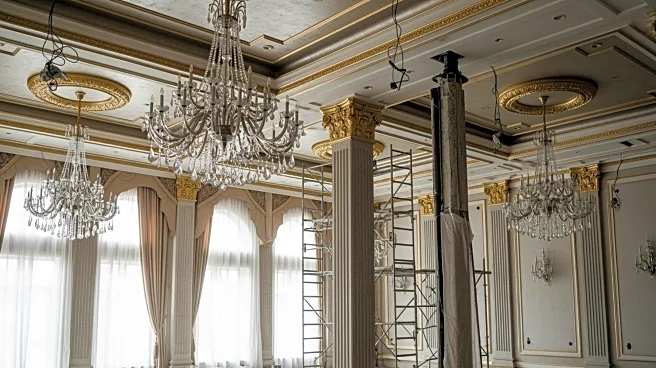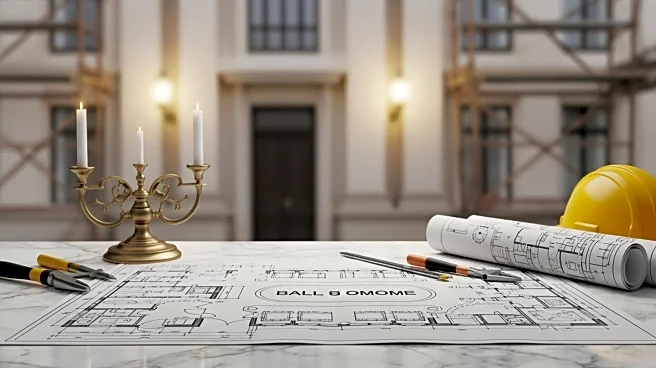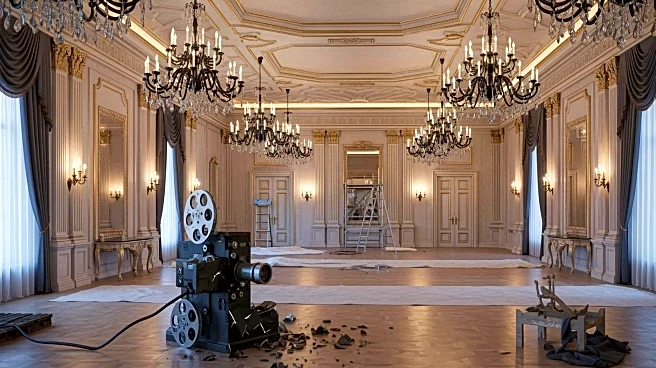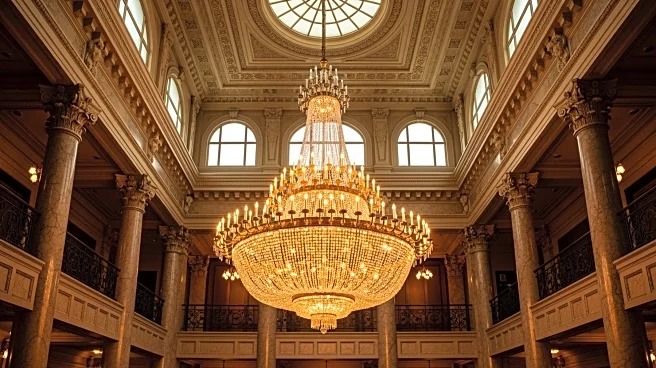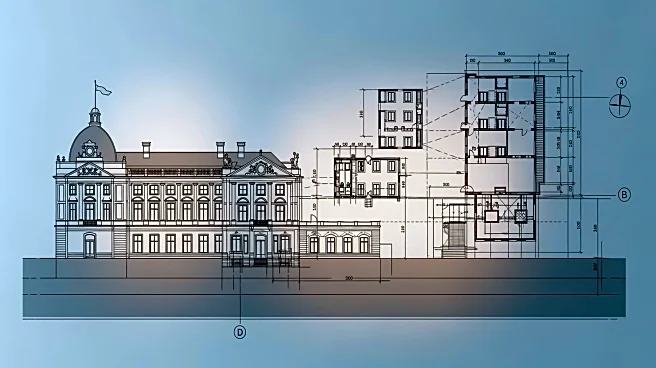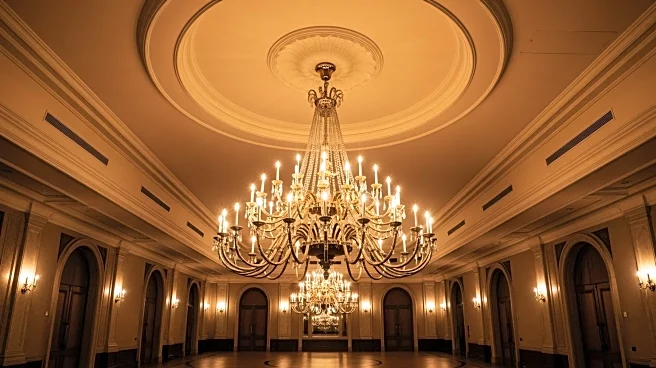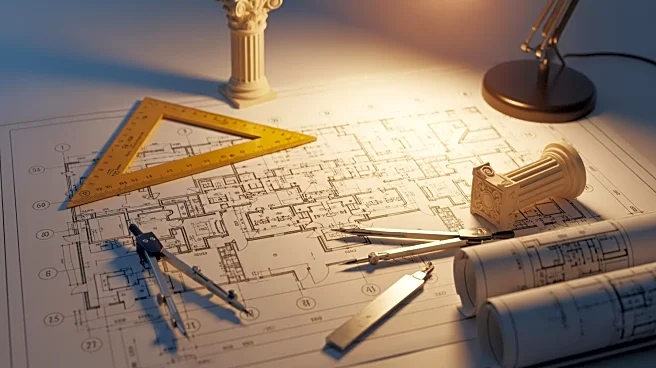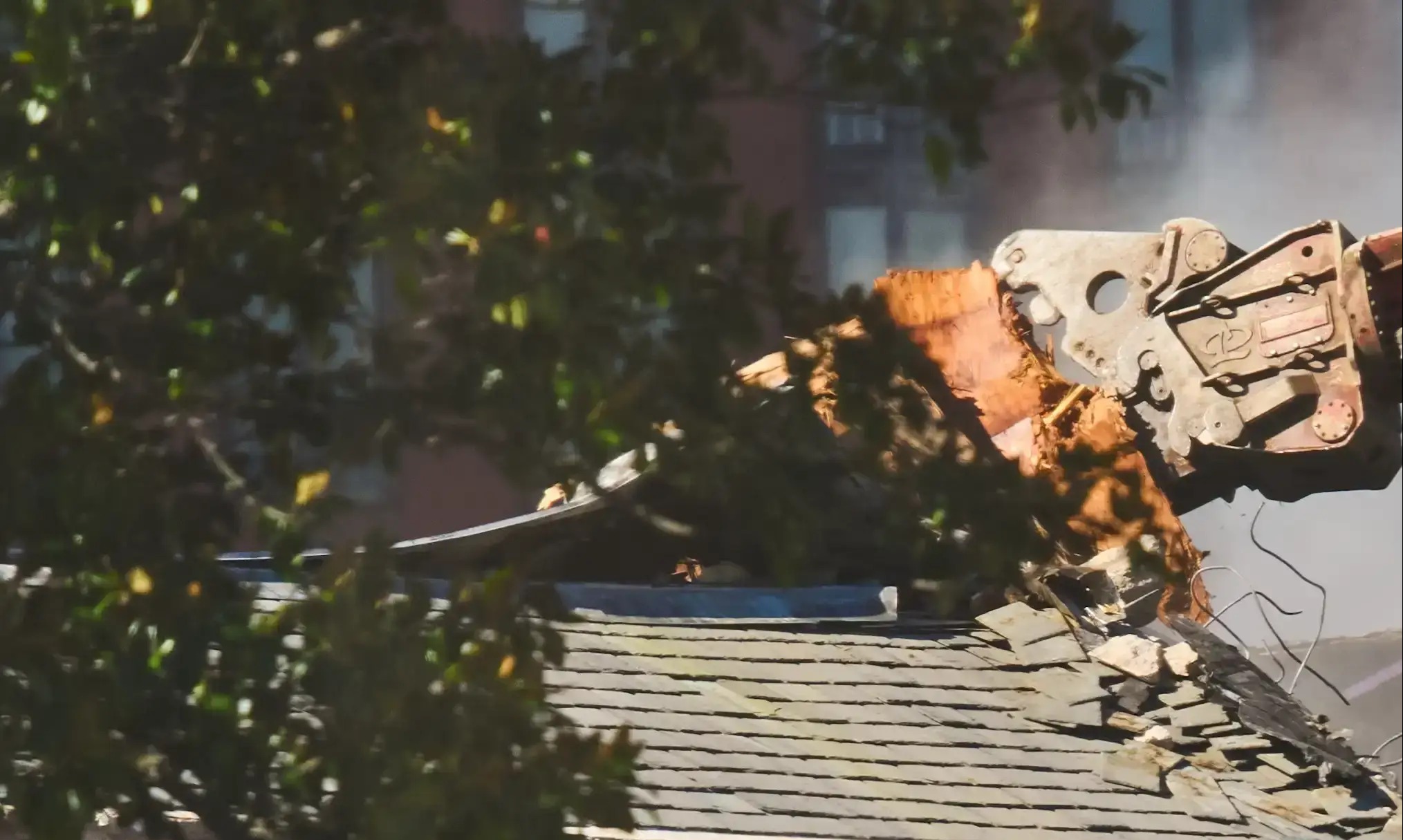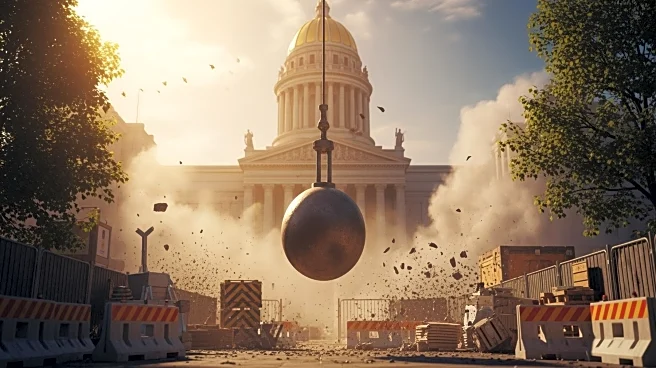What's Happening?
President Donald Trump has initiated a significant construction project to build a new 90,000-square-foot ballroom at the White House. The project officially broke ground on Monday, with the East Wing
being demolished in just four days. Despite initial claims that the new ballroom would not interfere with the existing structure, the East Wing, which housed a movie theater, offices for the first lady, and served as the main visitor entrance, has been completely removed. The new addition will include the ballroom, offices for the first lady, and guest suites for presidential guests. The ballroom is designed to seat nearly 1,000 people, a significant increase from the earlier estimate of 650. The project, initially estimated to cost $200 million, is now projected to exceed $300 million, funded by private donors.
Why It's Important?
The construction of the new ballroom represents a substantial alteration to the White House, reflecting President Trump's preference for classical architecture and large-scale venues. This development could impact public access to the White House, as tours have been suspended indefinitely. The project also highlights the administration's focus on private funding for public projects, which may set a precedent for future federal building initiatives. The expansion could enhance the White House's capacity to host large events, potentially increasing its role as a venue for significant political and social gatherings.
What's Next?
The completion of the new East Wing, including the ballroom and additional facilities, is expected before the end of President Trump's term. The project may prompt reactions from political leaders and the public, particularly regarding the use of private funds for federal projects and the suspension of public tours. The architectural style and scale of the project may also influence future federal building designs, aligning with Trump's executive order favoring classical architecture.
Beyond the Headlines
The decision to replace the East Wing with a ballroom raises questions about the balance between preserving historical elements of the White House and modernizing its facilities. The project's reliance on private donations could spark discussions about the role of private funding in public infrastructure. Additionally, the suspension of public tours may affect public engagement with the White House, altering its traditional role as a symbol of accessibility and transparency.
